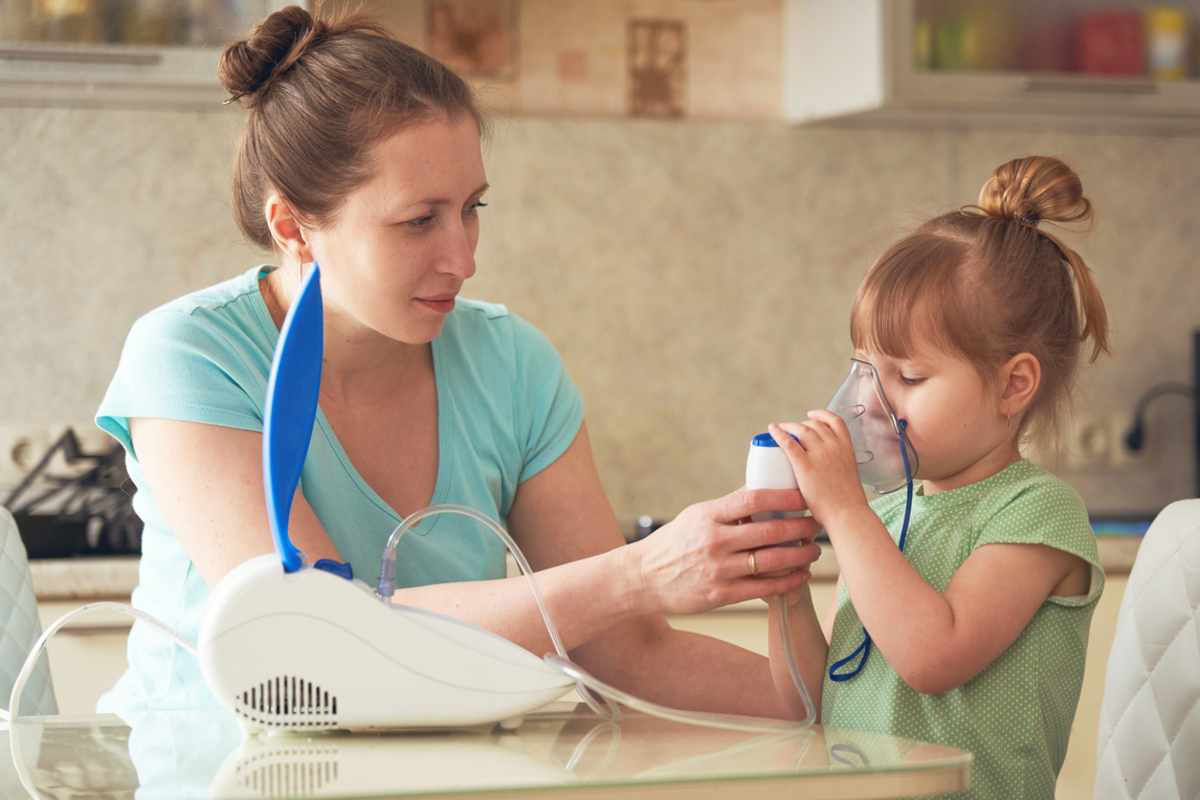Diagnosing asthma is no different than diagnosing any other medical disorder and must follow some established steps — anamnesis (medical history), physical examination, and additional tests. With adults, this process is usually easy, but younger children require a somewhat modified approach.

Diagnosing asthma in kids: Anamnesis (medical history)
In young children, parents usually provide information regarding the symptoms they notice. The most common symptoms are wheezing and a cough, and they usually mention one or more existing allergic reactions. The pediatrician is responsible for extracting all relevant information either from parents or from the child.
A history of atopic constitution plays an important role in the diagnosis of asthma, as about 85 percent of children with asthma have hypersensitivity to some allergens. The pattern of occurrence of the symptoms is also very important. For example, a pattern where the symptoms appear intermittently (in intervals) with no symptoms between those intervals goes in favor of asthma. Parents usually notice in which situations the symptoms of airway obstructions get worse, so it is important to obtain information about possible triggers from them. A history of asthma among family members brings us closer to making the diagnosis, too.
The anamnesis can even suggest the severity of asthma. Information as simple as the number of days of school missed due to symptoms can mean a lot in determining how aggressive the obstruction is.
What to expect from a physical examination during the diagnostic process
The first part of physical examination consists of an inspection of chest wall movements, noticing a prolonged exhalation, and possibly, the detection of skin rashes due to allergic reactions. The second part is the auscultation of the lungs with a stethoscope, which can reveal expiratory crackles and wheezing, although the wheezing can sometimes be so loud that the doctor and parents can hear it without a stethoscope.
Additional tests used in the diagnosis of asthma
Additional tests can be performed in children with suspected asthma. as well.
PEF (peak expiratory flow) uses a very handy peak flow meter that measures the PEFR (peak expiratory flow rate), which is the maximum expiration speed. However, in children, it has limited value, because of their limited ability or willingness to follow the instructions. It is only performed in children older than five years.
During the skin prick test, a small amount of allergen is inserted into the superficial layer of the skin (epidermis) with the aim to cause a local inflammation caused by the allergic reaction. A technician or doctor will make multiple pricks on the skin of the forearm to test multiple allergens, and one area will receive a histamine prick as a control. That area is expected to become inflamed.
The results are then quantified by measuring the size of the inflamed areas with a ruler. There are certain rules about the timing of this test. With seasonal allergies (tree or grass pollen), it is not recommended to perform the test during the allergy season, especially if a person must take antihistamine drugs for allergy control. Antihistamines can contribute to false negative results of the skin prick test. There are also other, more specific allergy tests, which can be performed after the skin prick test.
Lung function tests are designed to measure lung volumes and capacities. Airway obstruction can be triggered using the bronchoprovocation test and alleviated using the bronchodilatation test. Unfortunately, this works only for adults, and to some extent for children older than five years. This is because young children are not able to follow the test instructions. This is really a big drawback because these tests provide the ultimate confirmation of asthma.
Chest x-rays are only useful in the differential diagnosis of asthma, in order to rule out some other conditions. Otherwise, there is no specific need to perform a chest x-ray in cases when asthma can be confirmed based on consistent signs and symptoms, physical examination, and other additional tests.
- Photo courtesy of SteadyHealth
- www.ncbi.nlm.nih.gov/pmc/articles/PMC3820621/
- www.ncbi.nlm.nih.gov/pmc/articles/PMC1934462/
- www.ncbi.nlm.nih.gov/pmc/articles/PMC6478800/
- www.ncbi.nlm.nih.gov/pubmed/27801711
- www.ncbi.nlm.nih.gov/pmc/articles/PMC6634180/
- www.ncbi.nlm.nih.gov/pmc/articles/PMC3565910/
- www.ncbi.nlm.nih.gov/pmc/articles/PMC1238843/
- www.ncbi.nlm.nih.gov/pubmed/24673123
- www.ncbi.nlm.nih.gov/pmc/articles/PMC5072391/
- www.ncbi.nlm.nih.gov/pmc/articles/PMC2763562/


Your thoughts on this